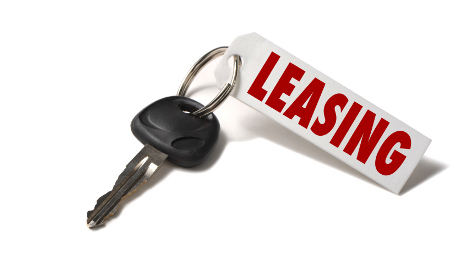In a monthly-payment driven world, leasing is on the rise to points never seen before, especially for contracts connecting new vehicles and consumers with prime credit. But Swapalease.com executive vice president Scot Hall gave the industry a question to ponder. What if finance companies considered leasing used vehicles — in particular, certified pre-owned models — to subprime consumers, particularly ones who are on the higher-end of the non-prime category?
Used-vehicle leasing still remains a small part of the industry’s book of business. Experian Automotive indicated used-vehicle leasing constituted just 3.19 percent of the entire leasing market in the second quarter, down slightly year-over-year. CNW Research determined there have been 692,218 used leases originated through the first eight months of this year. CNW’s data showed there were 705,180 used-car leases written through August 2013. In eight months of 2012, there were 705,027 used leases.
While those metrics all show slight softening for used-vehicle leasing, Hall again reiterated the potential that’s out there stemming from two key ingredients:
— Continuing rise in off-lease wholesale volume based on contracts written in the past two years.
— A population that has bruised credit but still the ability to make monthly payments.
“It would be a great thing for the entire leasing market overall, and looking more holistically, the entire auto industry overall. There are a lot of people who are going to be considered subprime that are still able to make a monthly payment, and they’ve just had a few hiccups and aren’t bad people at the end of the day,” Hall told SubPrime Auto Finance News during a recent phone interview.
“I think a lot of people lose sight of the fact that leasing is simply an alternative form of financing. You may choose to do a long-term installment loan; you may choose to do a short-term lease. But they’re all just options as a way to pay for that vehicle,” he continued.
“Why there hasn’t been more focus on subprime in the leasing segment, specifically, in the past? Frankly, that seems a little bit unusual that hasn’t been explored further,” Hall went on to say.
Hall also mentioned how the latest metrics from Swapalease.com shows the demand for leasing from subprime consumers.
Swapalease.com reported lease credit approvals during the month of August came in at 85.7 percent, the highest monthly level of 2014 and besting July’s rate of 81.0 pecent.
August marked the second straight month of improving lease credit approvals, and well above the 70-percent mark considered healthy on the Swapalease.com marketplace.
After dipping into a year-to-date average low of 64.5 percent in June, the annual tally is now up to 68.5 percent. The company believes a rise in subprime shoppers weighed down the credit approvals rate in 2014, as more shoppers in this credit profile have applied for a lease.
“We deal with a lot of different leasing companies, some directly, some indirectly. Each of those leasing companies has a little bit different credit process,” Hall said. “In most scenarios, the individual applying for credit is going to know within one or two business days if they’ve been approved to take over a lease. Some leasing companies as a result of not having as much focus on the lease-transfer process may take a little bit longer. It’s going to be a combination of notified directly or notified by mail. Really no differently than if they were looking into a loan or a lease initially at the dealership level.
“When we have a client who contacts us … it’s not uncommon for someone to think they don’t have the credit to do this,” he continued. “We don’t want to simply sign them up for our service and charge them a membership fee, knowing they don’t have a lot of chance for success to take over a lease. Instead, we want to push them over to our partner, ConsumerDirect.com.”
Swapalease.com works to help subprime shoppers elevate their credit profile through a program called Smart Credit and sponsored by ConsumerDirect.com.
“It’s a process and service that can help an individual learn more about what needs to be done to improve their credit and rebuild their credit and point them in the right direction,” Hall said.
Once these shoppers revitalize their credit they can re-enter the Swapalease.com marketplace and reapply for a lease assumption.
“We definitely have had success stories. At the end of the day, it’s a matter of severity,” Hall said. “Prime credit by most definitions is a 700 credit score and higher. Of course the higher the number, the better the credit. Anybody south of 700 in that range is going to be considered subprime.
“Generally speaking when someone has a score of 675, what they need to do to clean up their credit history and their portfolio is a lot less cumbersome than someone who might have a score in the high-500 range,” he continued.
“There’s really not a one-answer-fits-all. Depending on what someone has done in the past or more accurately what someone has not done in the past. It may take them longer to clean up that credit view,” Hall went on to say.
While Hall acknowledged it’s going to take quite an industry shift for leasing associated with subprime consumers or used vehicles to hit level experienced with new vehicles and prime customers, Hall insisted the potential is there to expand on the numbers seen by Experian and CNW.
“You’re going to have different levels of credit enter the market when you have that kind of growth,” Hall said.
Staff Writer Joe Overby contributed to this report.
Black Book isn’t just pitching its products and services to finance companies nowadays. Its analysts and staff are trying to emphasize to executives and managers who watch loan-to-value ratios and overall portfolio status about how much risk is building and how important it is to watch how long it will take for a borrower to return to an equity position.
In light of Experian Automotive highlighting second-quarter data that showed 24.1 percent of all new-vehicle loans and 14.1 percent of all used-car contracts contained terms ranging from 73 to 84 months, Black Book took a closer look at comparative collateral data in order to drill deeper into this trend. The company recently leveraged its Collateral Insight Engine technology to compare two different vehicles based on the exact loan terms of 72 months, 5-percent interest and a 120 percent loan-to-value ratio.
Based on the data from the example, Black Book indicated one vehicle achieved a positive equity position in just 37 months, a whole 15 months earlier than the other vehicle (at 52 months).
What’s more, the first vehicle had approximately $3,000 more equity by the 24th month versus that of the second.
Black Book vice president of analytics Anil Goyal explained to SubPrime Auto Finance News during a recent phone interview that knowing the potential loss-given default provides the ability for finance companies to become more competitive with their portfolios while mitigating risk.
Additionally, Goyal pointed out that positive equity will pinpoint those loans that are less likely to default, giving finance companies yet one more data point to differentiate two loans that look otherwise identical.
“As trends have emerged in the lender community, this risk is even more heightened with longer terms,” he said. “You’ve got to have an analysis on when that vehicle is going to come into an equity position. The longer it takes, the longer you’re exposed to market conditions where the trends could change and the vehicle depreciates much faster.”
Goyal emphasized the two aspects when finance companies assess risk. The first is the frequency of default, “which is really indicated by the credit score and you can factor that into your price and get paid for that risk,” according to Goyal.
The other element he mentioned is severity of default.
“When someone doesn’t pay,” Goyal said, “what’s the equity on that loan? How much balance is remaining? What can you recover out of that when you repossess that vehicle?”
Goyal stressed that these two risk-assessment factors are heightening nowadays because of finance companies stretching terms.
“Basically the lenders are trying to provide that monthly payment that the customer can afford,” said Goyal, who joined Black Book in a full-time role back in July after serving in a variety of consulting functions for the firm along with positions at Bank of America and Citigroup.
“But the key risk that’s evolved in this is that you’re going to be underwater for a longer period of time because the equity takes much longer to build up,” he continued. “Meanwhile, you’re having this addition trend of vehicle values softening and getting more toward the pre-recession time frame. You’ve got this double whammy. You’ve got the equity under water and not building as quickly and at the time vehicle values depreciating more.”
During the recent interview, Goyal offered another hypothetical example with some figures involved. He explained that with a typical 36-month loan, a borrower will have paid about 30 percent of that principle balance in a year. If the term is 84 months, the borrower only paid down about 10 percent of that principle balance following a year of payments.
“If the value depreciated anywhere from 25 to 45 percent from that original retail price to that wholesale value in that 12-month period, you’re significantly underwater with that 84-month loan,” Goyal said. “That’s why we think it’s so important to monitor that and put that into your analysis as a lender to make sure you are appropriately accounting for that risk up front as well as in your portfolio evaluation.”
Yet another piece of the puzzle to consider: The kind of vehicle that’s being attached to the contract. Goyal noted that currently values of compact pickups and SUVs are holding strong. A couple of years ago, it was entry-level cars that held that distinction, but Goyal indicated that values for those kinds of units are softening because the supply of those vehicles is on the rise.
Goyal closed his conversation by mentioning that watching the portfolio isn’t just an important chore for the underwriting and recovery departments at finance companies. He stated it’s also important for marketing divisions to watch these trends, too, so they can approach current loan holders with new opportunities if they currently are in a positive equity position.
“We are able to tell lenders when a loan is going to be in an equity position, how long is it going to take to get there and for lenders to be able to account for that throughout the life cycle as well as what’s my portfolio looking like and how does that impact loss forecasting,” Goyal said.
“We are constantly watching these trends,” he continued. “But as the market evolves these trends will change. That’s what we emphasize monitoring your portfolio is very important from a collateral viewpoint,” he added.
Reynolds and Reynolds this week launched of the Reynolds LAW Ohio F&I Library, a comprehensive catalog of standardized, legally reviewed finance and insurance documents available to dealers in the Buckeye State.
Officials highlighted the Reynolds LAW brand library of forms was developed jointly through a partnership between Reynolds Document Services and the Ohio Automobile Dealers Association (OADA).
"After partnering recently with a number of other state and regional dealer associations in the creation of LAW forms libraries, Reynolds is pleased to partner with the OADA in the same venture," said Jerry Kirwan, senior vice president and general manager of Reynolds Document Services.
“The OADA and our other dealer association partners understand a LAW forms library can support a comprehensive retail management approach for dealers and can help dealers improve the car-buying experience for their customers,” Kirwan continued.
Kirwan insisted changing regulations for automobile dealers have increased the pressure to improve dealers' F&I operations. As a result, he noted dealers are seeking trusted ways to help their business meet current compliancy standards, improve efficiency and lower risk, and stay up-to-date with customer service trends.
The LAW Ohio F&I Library of documents was created and will be maintained by the combined expertise of Reynolds director of compliance Terry O'Loughlin, Reynolds’ AFIP certified compliance legal specialists and the OADA.
"The creation of the Ohio LAW library aligns with our interests of providing our members with credible ways to improve dealership operations, as well as improve the experience for their customers," said Tim Doran, president of the OADA. "We are pleased to partner with Reynolds in this endeavor."
Based in Dublin, Ohio, the OADA is a political, economic and educational association created for Ohio dealers, by Ohio dealers, and managed by Ohio dealers, with the mission to protect the interests and increase the value of automotive dealerships throughout the state. Visit the OADA online at www.oada.com.
Reynolds' LAW forms are available in all 50 states and Washington, D.C., and have been endorsed by a number of state automobile dealers associations and leading automotive finance institutions.
The flagship product of the LAW brand is the Reynolds LAW 553 Universal Retail Sale Contract. The Reynolds LAW 553 is available in a variety of languages and is regularly reviewed by industry experts to help keep pace with new legislative and regulatory developments.
Reynolds Document Services offers similar LAW brand forms libraries to dealers in a number of states, including California, Pennsylvania, West Virginia and Virginia.
Make it 13 quarters in a row during which the average amount consumers had remaining on their vehicle installment contract moved higher year-over-year.
TransUnion's Industry Insights Report indicated that auto loan debt per borrower jumped 4.1 percent from $16,410 in the second quarter of last year to $17,090 in Q2 of this year.
On a quarterly basis, TransUnion reported auto loan debt increased 1.35 percent from $16,862 in the first quarter. TransUnion automotive vice president Peter Turek pointed out that auto loan balances rose in every state year-over-year during the second quarter.
Among the biggest U.S. cities, Houston and Phoenix saw the largest yearly auto loan debt rises of approximately 6 percent. Houston's average auto loan debt increased to $21,690, the highest such number of all major markets.
“The numbers reflect a continued healthy marketplace,” Turek told SubPrime Auto Finance News this week. “There’s competition amongst the manufacturers, auto lenders and dealers. It’s great, healthy competition. I think in the end it benefits all of those stakeholders, especially consumers, the folks who drive those vehicles every day and make the payments.
“What we’re observing is the fact that there is more recent originations,” he continued. “As consumers over the past several quarters have demonstrated, auto sales have been booming and related financing has been booming so we have a lot more auto loans on the books that are recent that have higher balances. That’s what’s driving the higher average balance across all age groups and the industry.
“In addition, when you think about what was going on a couple of years ago, consumers were deleveraging so we were talking about how average balances were going down quarter-over-quarter,” Turek went on to say. “Now we’re in the 13th consecutive quarter where there has been an increase in auto loan debt. I would say that’s primarily from increasing auto sales and more, and more consumers buying automobiles and financing them.”
In a new view of the data, TransUnion also noticed that auto loan debt increases for different age groups remained in a tight range, though changes observed for borrowers ages 40 to 49 were noteworthy. These borrowers saw the largest yearly percentage increase — up more than 5 percent — while also having an average auto loan debt level nearly $1,000 higher than the next age group.
“We’re pleased to offer this slice of data. We think it gives some value around what consumers in different age groups are doing. It’s not really surprising. I think some of it is intuitive. When you think about the ages of people when they’re the most credit active is typically between ages 40 and 60,” Turek said.
TransUnion recorded 62.3 million auto loan accounts as of the second quarter, up from 58.2 million a year earlier. Viewed one quarter in arrears (to ensure all accounts are included in the data), new account originations increased to 6.20 million in the first quarter of this year, up from 5.82 million in the same period last year.
Not Alarmed by Q2 Delinquency Uptick
Auto delinquencies rose slightly in the second quarter because there’s more paper on the streets nowadays, but TransUnion analysts don’t think the trends are necessarily bad for the industry.
According to TransUnion, the auto loan delinquency rate — the ratio of borrowers 60 days or more delinquent on their vehicle installment contracts — increased to 0.95 percent in Q2, up from 0.87 percent a year earlier.
However, TransUnion pointed out that auto delinquencies dropped on a quarterly basis from 1 percent in the first quarter of this year.
Turek explained that the latest delinquency rate remains below the Q2 average of 1.05 percent observed between 2007 and 2014.
Since 2007, Turek noted, the auto loan delinquency rate has reached as high as 1.59 percent (in Q4 2008), while its low was observed in Q2 2012 at 0.86 percent.
"Auto lending remains similar to what we have observed during the last several quarters,” Turek said. “Delinquency rates remain relatively low while auto loan balances keep rising — both metrics aided by increasing auto loan originations.
"In fact, there are 4 million more auto loan accounts in the marketplace than we observed just last year. This means with more auto loans in the marketplace and a delinquency rate ticking higher, we now have several thousand more delinquent accounts than at the midpoint of 2013,” Turek went on to say.
TransUnion indicated that all but six states experienced an increase in their auto loan delinquency rates between Q2 of last year and Q2 of this year. The largest delinquency increases occurred in Alaska, Michigan, Montana and Nebraska.
The largest declines occurred in Hawaii, South Dakota and Oregon.
The subprime delinquency rate (those consumers with a VantageScore 2.0 credit score lower than 641 on a scale of 501-990) increased from 4.12 percent in the second quarter of last year to 4.61 percent in Q2 of this year.
Turek also noted the share of non-prime, higher risk loan originations (with a VantageScore 2.0 credit score lower than 700) grew by 56 basis points (from 33.80 percent in Q1 2013 to 34.36 percent in Q1 2014). This percentage is still lower than what was observed seven years ago near the beginning of the recession (38.98 percent in Q1 2007).
Turek said observers should not read too much into the numbers because “4.61 percent of 1,000 is different than 4.61 percent of 1 million. I’m not suggesting it’s not a reason for concern. But I think when you think about the number of loans that are entering into 30-day delinquency, they’re not flowing through. Even though we still have a low delinquency rate overall, the number of new originations has certainly increased the frequency of delinquency. But we’re not seeing them translate into significant losses.
“As you look at that across the industry, you would interpret that as it’s pretty healthy. People are continuing to buy cars. They’re continuing to finance cars. It seems to be working right now, just in a very healthy way,” he continued.
"It will be interesting to see if lending to the subprime segment of the population continues to grow and what, if any, the impact will be on the overall delinquency rate,” Turek went on to say. “Historically, increased subprime lending pushes the overall delinquency rate higher. This is not necessarily a bad thing for the auto ecosystem — consumers find reliable transportation for work, lenders actively minimize the risk, and dealers sell more cars.”
Auto Finance: A Self-Managing Industry
SubPrime Auto Finance News also gathered Turek’s perspective on what’s been the talk of the summer — a perceived bubble inflating in connection with subprime vehicle financing. Like many other observers, Turek shook off thoughts that subprime auto finance is traveling down the same tracks as mortgages that derailed the economy into the Great Recession.
“When you think about what auto lenders do, they manage risk,” Turek said. “Where we are in the current business cycle we are seeing some tremendous growth since 2010 and 2011. Some of the growth is slowing so auto sales are slowing year-over-year. There’s going to be lenders that adjust where they buy to get more volume. There’s going to be more subprime lenders in the marketplace. And then there’s going to be consumers who feel more comfortable taking on a loan.
“When all of those factors combined come together in terms of the ecosystem, there’s going to be increases in delinquency. What we’re seeing is a return to this healthy competition. Delinquency is still, compared to other periods of time, really low, even in the subprime space,” he continued.
Turek also pointed to how finance companies cater their underwriting and analysis quite different between any auto or mortgage business it might conduct.
“Most of the time a vehicle is a shorter term piece of collateral. It’s not an appreciating asset. It’s a depreciating asset,” Turek said. “There’s a lot of that analysis that goes into the financing of that vehicle. It’s an interesting topic, but when you look at the numbers and peel them back, the industry has a way of self-managing itself when it comes to cost and things that impact the industry.
“When you look back at gas prices spiked, there were some lenders that had a lot of SUVs in their portfolio. They were able to account for those potential loan losses if one of those vehicles went bad because of gas prices or their values went sharply down,” he continued.
“Values and depreciation are priced into the loan,” Turek added. “I really don’t see that there is a subprime bubble. When you look at our data and delinquency, I think we’re returning to pretty healthy numbers.”
Western Funding is now active on DealerCenter. Executives highlighted this integration makes Western Funding’s financial products more accessible to dealerships by offering instant approvals and the ability to change the structure of the deals to meet customers’ needs.
“We're excited to partner with DealerCenter to offer 24/7 instant approvals,” Western Funding president Guerin Senter said. “By offering automated decisioning, we’re more efficiently serving our dealership partners. Now we can automatically return an approval with an aggressive deal structure and allow the dealer to adjust it for more profit; this is a huge step toward our goal of serving more dealers.”
Western Funding provides finance options for independent and franchised dealerships across all 50 states. The company’s loan programs are geared toward the subprime borrower unable to access traditional lending credit because of the age of the vehicle being financed or the customer's employment and credit history.
“We’re confident that Western Funding will see an increase of business by using our platform,” DealerCenter vice president of sales Jesse Martin said. “We’re look forward to growing Western Funding’s business with our innovative technology, as well as offering our customers more financial resources.”
DealerCenter is a Web-based dealer management system catering to independent dealerships. The company provides technology to more than 10,000 dealers nationwide and strives to make DealerCenter.net the "definitive place" on the Internet for the dealer.
“Having recognized the changes in the market, we have integrated with DealerCenter to better serve our dealership partners,” Senter said.
"Even with the improved technology, we haven't forgotten our roots and are heavily supportive of the personal touch,” Senter continued. “We have an entirely dedicated team of credit analysts to support and review the decisions and ensure they work with the dealer. We also pride ourselves in fast funding. When we receive a complete package, we guarantee funding within one day but usually fund the same day.”
In addition to Western Funding’s loan programs, the company also offers bulk portfolio purchases of various sizes. Western Funding purchases accounts receivables from buy-here, pay-here dealerships, “allowing them to focus more time on selling cars rather than collections,” according to executives.
Finance companies’ appetite for subprime risk appears to be waning, judging by the softening trends Experian Automotive shared on Wednesday.
According to its latest State of the Automotive Finance Market report, Experian determined that the percentage of new-vehicle loans to subprime and deep subprime borrowers began to level off in the second quarter.
The percentage of new-vehicle loans going to consumers in the subprime and deep subprime segments was at 15.1 percent in Q2, down from 22.1 percent a year earlier. While analysts pointed out the latest reading is higher than the low at the worst juncture of the recession in 2009 when it was at 10.2 percent, they also said the current figures are still well below the prerecession level highs of 16.6 percent in Q2 of 2008 and 19.9 percent in Q2 of 2007.
The subprime softening also is apparent on the used-vehicle side, too.
Experian indicated the percentage of used-vehicle loans extended to the subprime and deep subprime segments in the quarter settled at 40.2 percent, down from 50.6 percent in Q2 of last year. Again, the figures are up slightly from the 39 percent seen in Q2 2009, but still below the prerecession levels in 2008 and 2007 of 43.4 percent and 46.6 percent, respectively.
Melinda Zabritski, senior director of automotive finance for Experian, examined the figures and shared her thoughts, just like she will do during the opening keynote presentation at the SubPrime Forum, which runs from Nov. 10 through 12 as a part of Used Car Week at the Red Rock Casino, Resort and Spa in Las Vegas.
“Although we’ve seen relative stability in the automotive industry the past several years, lenders are still showing cautionary signs when lending to the subprime market and keeping their risk at manageable levels,” Zabritski said.
“As for consumers, as long as those in these higher risk segments continue to pay their bills on time, keep delinquent balances in check and select a vehicle that fits within their budget, they should still be able to obtain the necessary financing to purchase a vehicle that meets their needs,” she continued.
As subprime volume softened year-over-year, Experian also noticed the amount that borrowers with bruised credit histories also dipped in the second quarter.
The average new-vehicle loan amount to a subprime borrower dropped to $27,347 in Q2 2014 from $27,563 in Q2 of last year, and new loans to deep subprime borrowers fell to $24,836 in Q2 from $25,486 in Q2 a year earlier.
For used vehicles, the average subprime borrower loan fell to $16,546 in Q2 from $17,020 in Q2 of 2013. Used deep subprime loans fell to $14,358 in Q2 from $15,113 in the year-ago quarter.
While those contract amounts are on the way down, Experian also pointed out the average monthly payment for a used vehicle reached an all-time high in the second quarter. That monthly commitment for a used vehicle came in at $355 in Q2, up $4 from a year ago.
“Used-vehicle financing has experienced consistent growth over the last several years,” Zabritski said.
“As we continue to see the price of vehicles reach new heights, more and more consumers, especially those that are credit challenged, are turning to the used vehicle market as a viable option to purchase their next car,” she went on say.
While not a record, Experian also noted that the average monthly payment for a new vehicle increased, too. The second-quarter average moved up by $10 to $467/
Experian also highlighted several other trends from the its Q2 data, including
• Of all new vehicles sold in Q2 2014, leases accounted for a record high 25.6 percent, up from 23.4 percent the previous year.
• The interest rate for a new vehicle was up from 4.46 percent in Q2 of 2013 to 4.59 percent in Q2 of 2014.
• Used vehicle interest rates were up from 8.56 percent in Q2 of 2013 to 8.82 percent in Q2 of 2014.
• The average credit score for a new vehicle loan in Q2 of 2014 was 711, up from 699 a year earlier.
• The average credit score for a new vehicle lease rose to 717 in Q2 of 2014 from 706 in Q2 of 2013.
Manheim chief economist Tom Webb regularly tries to take questions connected to current events when he closes his monthly Auto Industry Brief. The August edition contained questions that likely came from a busy F&I manager.
The questioner arrived at the query after reading that household debt levels shrank in the second quarter.
“That’s not the sense I get from reviewing our customer credit apps, nor is it consistent with the large amount of new paper we are sending to lenders every month,” the individual told Webb. “What gives?”
Webb began his response by acknowledging total outstanding debt (mortgages, home equity loans, student loans, auto loans and credit cards) did, in fact, decline by $18 billion in the second quarter, according to Federal Reserve information.
But it was a tale of two cities — mortgage lending fell to a 14-year low, while auto lending hit an eight-year high,” Webb said.
In light of those figures, Webb tried to give more perspective beyond the broad figures.
“All in all, the state of household finances is solid. Lower debt levels, low interest rates and modest income growth have pushed debt servicing costs down to levels not seen in over 30 years,” Webb said.
“Nevertheless, there is still a very broad swath of the country that lives paycheck to paycheck and where debt servicing costs eat up the majority of income,” he continued. “Those stories are always lost in the aggregate averages.”
With this F&I manager evidently busy with applications, the situation reinforced Webb’s position about how the availability of vehicle financing is one of the facts supporting the sustained rebound of auto sales — both new and used.
“There is no way to overstate the important role that favorable retail financing conditions have played in supporting used-vehicle sales and residual values throughout this recovery,” Webb said. “And, unlike times in the past when aggressive new vehicle financing hurt used-vehicle residuals by switching customers from a used purchase to a new one, this time the financing deals are being used to support higher average new-vehicle transaction prices.
“In addition, today, the great financing deals are also available for used vehicle purchasers,” he added.
After taking his turn refuting this summer’s much-discussed New York Times series that attempted to convey a subprime auto finance bubble inflating, Webb did describe what he called the “fantasy” portion of vehicle financing. He pointed out current conditions of financing availability likely won’t continue into perpetuity.
Webb insisted it is fantasy “to assume that retail credit conditions will continue to get better, loans will get longer, and that there will be no downside.
“When rates rise — and they will — the market’s all-consuming ‘search for yield’ will abate,” he continued. “And, when that happens, lenders will no longer be awash with funds and, thus, will become more restrained. It is also fantasy to assume that the lengthening of loans that has already occurred is not a negative.
“In addition to increasing the severity of loss on the few repos that do occur, extended terms can also negatively impact customer satisfaction when owners find it difficult to trade out of their ride when they want,” Webb went on to say.
As CNW Research noticed both sequential and year-over-year increases in approvals for subprime vehicle financing so far this month, two Equifax economists took their turn to again reiterate how a bubble is not forming in that segment, contrary to the connection some observers are making to the mortgage meltdown.
In a white paper released on Monday, Equifax explained the three critical components to the bubble formation in the mortgage space going into the recession. Those elements included:
— Rising asset prices (home prices) fueled speculation in residential real estate.
— New-home construction was at all-time high for a sustained period and exceeded population growth.
— The share of mortgages originated to subprime credit borrowers was rising at a time when home purchases were at record levels.
Equifax chief economist Amy Crews Cutts and deputy chief economist Dennis Carlson pointed out in the white paper that as the number of borrowers who were well-qualified to finance a home purchase did not rise in tandem, the credit bubble was fueled by inappropriate lending, which in turn fed the asset bubble.
“While there are always key differences in the housing market compared to the auto market, including housing as a potentially appreciating asset versus an auto that is likely a depreciating asset, the Equifax expert acknowledged there are some similarities in factors that indicate some “effervescence” such as quickly rising sales of new vehicle and an even faster rate of increase in auto lending.
“But looking closely at those similar factors, we see that the auto market of today is just now recovering to pre-recession levels and, unlike the mortgage market immediately prior to the recession, the auto market was not in the same frenzied state at that time,” said Crews Cutts and Carlson, who noted that new-vehicle sales reached their peak level in the first quarter of 2000 and averaged 16.96 million units for the six-year period ending December 2005.
Crews Cutts and Carlson began their white paper titled, “Not Yesterday’s Subprime Auto Loan,” by reiterating the importance subprime financing is to the future of consumers who have damaged credit profiles. The Equifax economists noted the positive consumer ramifications well known to finance company executives at institutions that specialize in subprime contracts such as the importance of quality transportation to enhance employment opportunities and how steady payment performance can possibly lead to a rise toward prime status.
“If a borrower with subprime credit obtains a loan from a financial institution that reports the complete payment histories of their clients to the national credit reporting agencies, and that borrower makes timely payments on that loan and other credit obligations, then over time that borrower’s credit score will likely improve, possibly enough to qualify for prime credit terms,” Crews Cutts and Carlson said.
“If, however, the subprime-score borrowers are precluded from mainstream sources of credit, it becomes more difficult for those borrowers to improve their credit scores,” they continued. “Auto financing in the subprime segment adds to the benefits by enabling credit-worthy consumers to obtain reliable transportation and acquire a valuable, albeit depreciating, asset.”
Adding to the importance and value of subprime auto financing, Crews Cutts and Carlson emphasized that the lending landscape today is not the same as it was in 2007 when experts contend the economy ran into its worst tailspin since the Great Depression.
“Lending in the heyday of the credit boom often greatly underweighted any consideration of credit worthiness outside of a credit score. However, credit scores are predicated on lending underwriting standards being maintained as they were during the reference period used to create them — that is, they explicitly assume that lenders will verify the collateral, capital, and capacity of borrowers just as they always have,” the Equifax economists said.
“Lending has returned to the ‘good old days,’ both because lenders generally have a reduced appetite for risk and because regulatory scrutiny has increased,” they continued. “Specifically, in the subprime auto lending segment most lenders are now verifying incomes today on all loans.
“Given this, loans originated with a 620 credit score today are likely to perform very differently from loans originated with a 620 credit score in 2007, when the loans were likely granted without full underwriting,” Crews Cutts and Carlson went on to say.
And CNW’s data showed the modest increases the industry is currently generating. According to the firm’s August issue of its Retail Automotive Summary, subprime contract approvals are up 5.18 percent in August compared to July and 9.91 percent higher versus the same month last year.
Equifax closed its white paper by pointing out that subprime vehicle financing needs to be monitored carefully, especially given the risk finance companies take providing loans to borrowers in the subprime space.
“The evidence does not support that there is a bubble forming in the auto lending space,” Crews Cutts and Carlson said “It is also beneficial to consider than an unmet need is being satisfied.
“Assuming originations and loan performance in the space remain as they are today, this may benefit the overall economy, as well as the individual participants, in the long run,” they added.
The complete white paper from Equifax is available here.
Dealer solutions provider Autosoft now offers convenient access to credit report and compliance services within its Web-based FLEX F&I application because of a new a partnership with 700Credit.
On Monday, executives highlighted this partnership can help dealers quickly complete the entire sales process without leaving Autosoft’s FLEX F&I application — in most cases while a customer sits across the desk. Sales personnel can pull credit and comply with mandatory state and federal requirements using 700Credit’s credit reports product and the included compliance safeguard features.
“At Autosoft, we’re always looking for ways to make our customers’ jobs easier,” Autosoft senior vice president of business development Christopher Morris said of the new integration.
“Convenience and cost-savings are important to our customers, so we’re happy to offer a fairly priced service that saves time and steps for our dealerships,” Morris continued. “More importantly, 700Credit provides our FLEX F&I users with a simple, efficient and effective means for ensuring compliance with federal and state laws that many dealerships may not even realize they are required to follow.”
With just a few mouse clicks, FLEX F&I users can:
— Gain access to credit reports and credit scores (FICO and Vantage) from the leading national credit repositories, Equifax, Experian and TransUnion. The Vantage Score is a new generic credit scoring model that provides accurate scores for potential buyers who use credit infrequently and more credit-worthy borrowers from a broad population.
— Access a credit report summary that helps dealers and lenders analyze the most significant factors in a consumer’s credit file.
— Quickly comply with the U.S. Patriot Act by screening customers against the U.S. Treasury’s Office of Foreign Assets Control (OFAC) for every commercial transaction at a dealership.
— Prevent identify theft and comply with the new Fair and Accurate Credit Transactions Act “Red Flag” identify theft program with a turn-key solution that can automatically alert the dealer to potential identity theft Red Flags and offers verification options at the point of sale.
— Stay in compliance with federal and state adverse action laws and regulations. 700Credit can either print an adverse action notice for a dealer to provide to the customer or send it automatically on the dealer’s behalf within 30 days of the original application.
— Receive an automatically generated Risk-Based Pricing Score Disclosure Exception Notice each time a credit report is retrieved.
— Use Prospect Prescreen to gain a unique insight into a customer’s credit profile from basic deal information — and without needing a Social Security Number or permission — enabling a more informed conversation with consumers during the sales process
“The integration with Autosoft's FLEX F&I application gives dealerships complete, instant access to our credit reporting and compliance solutions. 700Credit managing director Kenneth Hill said of this new offering.
“In today's market, the ability to save time and not have to worry about the legal ramifications of various regulations brings dealers peace of mind while increasing profitability,” Hill continued.
Hill added 700Credit is offering Autosoft’s FLEX F&I customers preferred, pay-as-you-use pricing for its credit reporting and compliance services.
Hill highlighted a wide array of compliance issues dealers must track during a recent webinar hosted by SubPrime Auto Finance News. The recording of that webinar can be viewed in the above window.
Sparked by the best July in company history, Westlake Financial Services announced this week that it reached $2 billion in total receivables.
Westlake’s portfolio now has that total receivables figure connected to more than 270,000 customer accounts.
“Having a portfolio of $2 billion is a huge accomplishment,” said Don Hankey, chairman of Westlake Financial Holdings. “It is a reflection of all the hard work of our dedicated employees as we continue to strive to grow every year and provide products that allows our dealer partners to help finance all customers.”
This latest milestone continues the growth the company has experienced through the latest recession. Westlake’s portfolio reached $450 million in 2009 and then $1 billion two years later.
As keys to success, Westlake Financial Holdings group president Ian Anderson highlighted the company’s flexible products, diverse services, technology, financial partners, lasting relationships with independent dealers and expanding service into the franchise market.
“We continue to focus on providing robust and flexible financial products for our customers, and that continues to help us in the market,” said Anderson, who is part of the stable of industry leaders who are part of the SubPrime Forum, the financing piece of Used Car Week.
“In 2009, we were a $450 million company, and now we are five times that size because of our employees and our dealer partners,” he continued.
Westlake Financial Services continues to focus on building dealer relationships in all 50 states. Westlake partners with Nowcom to provide automated full spectrum financial products and dealer management systems through DealerCenter.
“Our growth is made possible because of our strong relationships with banking partners such as Wells Fargo, JP Morgan, RBS, CSFB and Bank of America, to name a few,” Anderson said. “The backing of the Hankey Group, Marubeni and our relationships with business partners allows the companies of Westlake Financial Holdings to help dealers or returning Westlake customers in the market.”
Westlake Financial Services is a full spectrum finance company offering rates as low as 1.65 percent. Westlake serves all 50 states and offers solutions for all FICO scores.
“Westlake is in a unique place in the market where we can offer financial solutions for any dealership across the United States,” said Mark Vazquez, senior vice president of sales and marketing for Westlake Financial Services.
“We offer a full spectrum of products for a full spectrum of dealers brought by 300-plus dealer account managers motivated to help dealers sell more cars and make more money,” Vazquez went on to say.
Discussions about how companies such as Westlake Financial Services are growing are among the many topics on tap for the SubPrime Forum, which is set for Nov. 11 and Nov. 12 at the Red Rock Casino, Resort and Spa. The event orchestrated in collaboration with the National Automotive Finance Association is designed to foster dialogue about the competitive and regulatory environments as well as other elements critical to the subprime segment of the industry.
Details about the event’s agenda, registration and more can be found at www.usedcarweek.biz.












